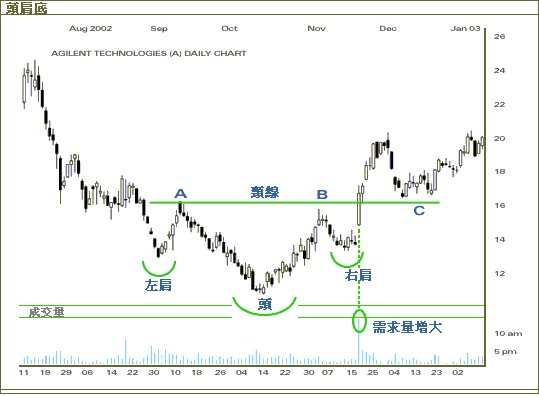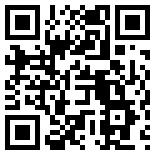頭肩底(Head & Shoulders Bottom)跟隨下跌市勢而行,並發出市況逆轉的訊號。顧名思義,圖形以左肩、頭、右肩及頸線組成。三個連續的谷底以中谷底(頭)最深,第一及最後谷底(分別為左、右肩)較淺及接近對稱,因而形成頭肩底形態。當股價一旦升穿阻力線(頸線), 則出現較大幅上升。 成交量可為頭肩底形態充當一個重要的指標,大多數例子中,左肩較右肩和頭部為大,下降的成交量加上頭部創新低可充當一個警號,警戒市勢正在水平線上逆轉。 第二個警號是當股價由頭部的頂峰上升時,即價格向上突破頸線後,再次回落至頸線支持位,然後才大升。最後逆轉訊號是在股價向上窗破頸線後,把握時機入貨,若未能跟進,則可望出現「後抽」回試頸線支持位時買入。 在大多數圖形中,當阻力線被穿破,相同的阻力線在後市中轉變為支持線。 
上述圖例,左肩A點形成在一個正下跌及整固的市況。頸線從A點開始形成後,再次回落約一個月,形成頭部。隨後價格開始反彈,到B點再度回落,形成右肩。直到頸線的第二點出現,成為阻力線(即B點)。價格隨後因有大量成交而上升穿破阻力位(頸線),頭肩底圖形從而確認。升破頸線後,可能有抽後情況發生,如不跌穿頸線,市勢將向著目標幅度而上升。 從以上例子得知,投資者不一定會即時追隨已破頭肩底頸線的股票。通常,價格會再次回落到支持位(如C點)給投資者另一個買入機會。 | 

